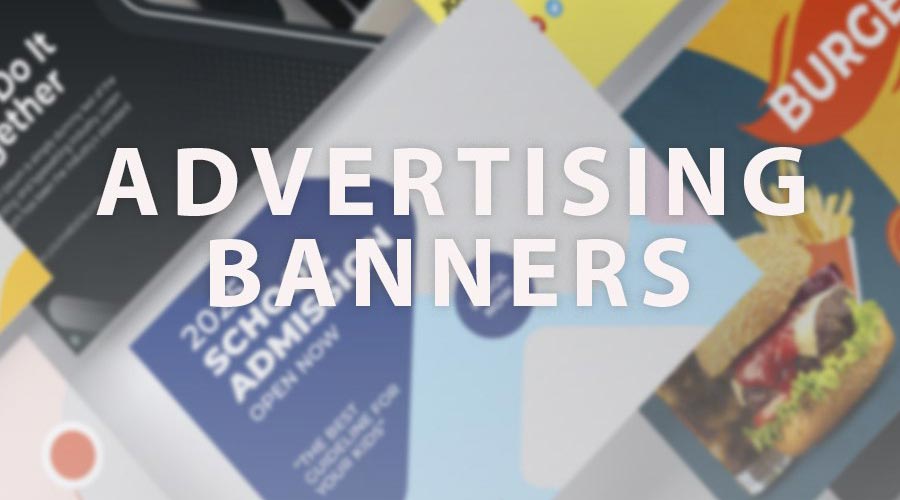Profiting from a blog is easier said than done, let’s clear this right away, though it is possible. It requires a lot of tears and sweat, as well as a business-like approach. Our goal here is to highlight ways to make money blogging. This is part of a 3-piece series: Blog ideas, How to start a blog, and present topic.
We also do not promise six-digit profits as most populist articles online. Blogging is not a “get-rich-quick” scheme. Developing awareness gradually, improving content and gathering the following, you should be able to grow from covering the expenses to earning extra hundreds or thousands.
The following information implies a successful and properly functioning blog with stable traffic. Those who just enter the game should not expect to make money blogging from the get-go and even within one or two years. Now, to the point – 6 key blog monetization strategies.
Affiliate marketing

Affiliate marketing is a passive income method by promoting affiliate products and receiving a commission from purchases or conversions. Most publishers and bloggers use affiliate marketing programs. To get examples, one may Google a search query: websitename.com affiliate program.
When partnership is sealed, a unique link (URL) to each product/service is generated and inserted into an agreed blog post. When visitors click on it and make a purchase, it is tracked and thus a commission is paid out.
There are three types of commissions in affiliate marketing:
- Commission per sale (CPA) – an affiliate receives a commission for every purchase a customer makes after clicking on an affiliate link. This is the most popular one.
- Commission per click (CPC) – an affiliate receives a fixed amount every time a buyer visits a seller’s website.
- Commission per lead (CPL) – an advertiser pays for each registration or subscription to a newsletter by interested visitors.
Often, companies work with affiliate networks. It could be beneficial to a blogger too, as partnering with dozens of companies individually could be quite challenging in terms of keeping track. Also, in affiliate marketing the amount of web traffic to a blog is less significant. However, affiliate networks have certain conditions too. For example, to become an Amazon partner, one has to make at least three sales through the affiliate link within 180 days to stay in the program.
The most popular and reliable affiliate networks are:
- AWIN – a global partner network for retail, telecom, travel, finance. 15 offices worldwide, over 1,000 employees, 211,000 publishers, and 15,200 advertisers.
- Amazon Associates – helps content creators and publishers make money blogging by paying up to 10% in commissions. Bloggers may guide their audiences to any of millions of products on Amazon.
- eBay partner network – 183 million customers and about 80% of all items currently sold on eBay are electronics and accessories. The maximum commission is 4%.
- Rakuten – products from Nvidia, Lego, Microsoft, Billabong, NordVPN, Monster, JetBlue, etc. Commissions are paid 60 days after conversions, and the minimal threshold is $50.
- ClickBank Affiliate Marketplace – with the highest commissions, up to 90%. This partner network provides over 4,000 products in art, email marketing, games, health and fitness, gardening, etc.
- ShareASale – acquired by AWIN in 2017, but to this day, it operates as a separate brand. The network connects online stores with more than 200,000 affiliates worldwide.
Other platforms worth mentioning: Skimlinks, CJ Affiliate Home, VigLink, MaxBounty, PeerFly, Admitad. There are also scammers, so choose carefully. There could also be disputes on determining who exactly brought the customer – “last cookie wins” (a.k.a. last paid click) model is often applied.
Overall, affiliate marketing is most successful when you sell a product that you adore and use yourself, which means honest “real-deal” attitude towards followers and, therefore, more conversions. Then you can even negotiate higher commissions.
Advertising banners

Today it is almost impossible to find a website that does not have a single banner. Earning with ad banners is perhaps the oldest option for any website or blog. An advertiser or an ad network pays money for placing a banner on your site on a 1000-clicks basis (CPM).
Most ad networks use targeted ads. This means that the ad changes on every page load, depending on a visitor, article topic, recently viewed pages. We advise paying attention to the following ad networks:
- AdSense – no limits
- Sovrn – no limits
- Propeller Ads – no limits
- Pop Ads – no limits
- Bidvertiser – no limits
- infolinks – no limits
- Mediavine – 25,000 sessions per month
- Adthrive – at least 100,000 views per month
- Media – content needs to be in native English
A general rule of thumb is not to overload a blog with ads, 2 to 4 banners max, and maybe a pop-up, depending on the blog niche. Place it anywhere, yet it’s common to put it at the top – say, in the header, sidebar, or in the middle of an article. Note that banners are the least profitable way to make money blogging, and it is only relevant with 25,000 and more monthly unique visitors.
Sponsored content

Sponsored content is a native advertising created by the publisher, for example, review of a product, software, equipment, clothing. In return, a fixed amount of money is received from the other party. It is also possible to integrate affiliate links into such content, and thus get extra income besides one-time payment.
Sponsored content is no different from the regular content on a blog. Often sponsored content is marked as such to be transparent with the audience. Also, sponsored does not necessarily mean positive, as all the aspects (pros and cons) could be highlighted. A positive review for a bad product can cost you dearly.
For novice bloggers the easiest way for this type of blog monetization is to use sponsored networks, commonly referred to as “influencer networks”. Most of those are focused social media profiles on Instagram, Facebook, TikTok, etc. Obviously, if you blog, be sure to build your social media audience. Here are some networks, though, that are ready to collaborate with traditional bloggers:
- SwayCreator
- IZEA
- Pollinate
- Activate
- Weave Made
- CreatorIQ
- Upfluence
- AspireIQ
- valuedvoice
- Onalytica
- Webfluential
- influence.co
Regarding the amount of sponsored content, we advise sticking to the Pareto principle and assign no more than 20% of content for sponsored materials. Make sure to make it relevant to your niche and topics too.
Influencer networks often provide promo codes – a four-digit (or more) code that shoppers use at checkout to get a discount on items in their cart. There are three types of promo codes: public, private, and limited codes. With such discounts and coupons one can try to motivate readers to purchase goods, and discounts prove to always increase interaction.
Selling products or services

Direct selling of services or products could have an advantage over other ways to make money blogging. Investing time and effort in producing a great product rather than producing content may lead to success, who knows? Proper and qualitative presentation still matters, though.
Surely, you have visited blogs where a person is selling merchandise (clothes and accessories), books, online courses, access to premium content, etc. It works and brings good money, but only for established bloggers whom brands seek to offer cooperation. Let’s take a look at all the possible product categories relevant to blogging.
Services: coaching and consulting
Bloggers offering expert assistance in their niche, thus confirming their trade and attracting new customers. This is the way to understand the needs of the audience better, build relationships and make a blog grow. For profit, coaching and consulting could be both the main and additional source of income.
Digital products
A digital product is a product that is created, sold, and used exclusively on the Internet, e.g. e-books, webinars, software. Make one product and sell it unlimited times, there’s no inventory, warehouse or shipment involved. Place it on a blog, website, or a marketplace.
Concepts for digital products are numerous, here are a few examples that bloggers can sell:
- E-books as a passive income. One book, a series of books, an audiobook.
- Online courses are getting more and more traction recently. Any knowledge or a set of skills can be turned into a course, and it doesn’t matter if it already exists. People seek the opinion of those bloggers they trust.
- Webinars are an alternative to time-consuming books or tutorials. Webinars can be either paid or free to create a sales funnel.
- Manuals and tutorials that are usually per single skill or task, e.g. belly dancing, gaming trick, podcasting, etc.
- Membership, subscription, private forum to offer exclusive content, e.g. guides, recipes, workouts. Requires regular updates, of course.
Physical products
Determine what products are of interest to readers, find out what they buy through affiliate marketing – this will help present the right in-demand product. Famous bloggers sell their own merchandise (sweatshirts, tshirts, pants, mugs, etc.) as an extra income and a way to boost awareness. One can also sell books, baby products, stickers, tech accessories, etc.
Wholesale is another way to make money from a blog and it doesn’t require creating your own product. It comes in 2 forms: 1) purchasing a product, packaging and delivery to buyers; 2) dropshipping from a supplier to customers. The latter takes care of packaging and shipment instead of you.
How and where to sell digital and physical products?

Choosing the e-commerce platform is a tricky and demanding decision. After all, all platforms have their pros and cons. We recommend starting selling both through your own platform and several third-party platforms.
- Selling products through your own WordPress platform
The best sales solution to earn by blogging, would be to implement sales tools on a site. Since WordPress is the most popular CMS platform among bloggers, we take it as an example. Popular plugins are WooCommerce and Easy Digital Downloads that allow selling products, subscriptions, conducting email marketing campaigns, embed payment gateways, etc. Consider Ecwid as an alternative.
- Selling through third-party e-commerce platforms
Additionally, place goods on one or several marketplaces to get additional sales channels.
- Gumroad enables sales on it and can integrate buy buttons to WordPress blogs. Under free subscription the commission is 9%, while under $10 subscription it offers custom domain and 4% commissions.
- Amazon is the most popular platform for entrepreneurs selling digital goods online. The site provides an excellent opportunity to reach an international audience. Commissions vary.
- Walmart is popular in the USA, China, Canada, and the UK. For non-American residents, access to registering as a seller is by invitation only. Sellers pay referral commissions.
- AliExpress is designed for small businesses in China and Asian countries. Commissions aree 5-8% depending on product and category.
- eBay – new and used products, no restrictions. Commissions vary.
- Udemy is a niche platform for selling video courses. If someone uses your promo code, you receive 97% of the income. If the buyer comes through a search engine, you get 50%.
- Apple iTunes Store sells books, music, apps, videos, and more. Commission vary, but could reach 43%.
- Themeforest is the place to buy and sell website templates, HTML codes, marketing themes, PSDs, and plugins. Commissions depend on sales volumes.
Physical VS digital products
People are more likely to buy physical goods. A photograph, a book, a vinyl loses its charm when transferred into digital. Digital products pros – unlimited stock, no delivery or logistical restrictions, 24/7 availability, higher profitability ratio; cons – intangible, difficult to demonstrate value, risk of data loss. Physical products pros – material objects, easier to prove value, ability to create a unique product; cons – stock management, delivery, shipping fees, physical damage, limited stock.
Paid membership

This way to make money blogging in most part is attributed to sale of digital products, but we reckon it deserves to be named a separate strategy. It is possible to nudge followers to buy access to content but only if you provide truly unique and useful materials. Here are three ways to monetize a blog with paid membership.
- Content for premium members
Premium membership requires investing much time in creating premium content, as it should be more than typical textual information. Only relevant when having a devoted fan base. Incentivize them by removing ads, allowing commenting, uploading video and audio, etc. Check out MemberPress, Paid Content Packages Subscriptions, Frontend User Pro, WPAMS plugins for WordPress websites.
- Private forum
Creating a forum is an alternative solution to premium memberships, but one does not need to produce unique content for subscribers. Forum’s main task is communication between you, followers, trusted figures, experts. The down side is need for constant moderation, although it too could be assigned to top subscribers along with various perks and goodies as motivation.
The forum may be free, but access to some categories is only with a subscription. The following plugins will help install and manage a forum on WordPress: bbPress, BuddyPress (user profiles, activity streams, posts), Simple:Press (forums, subforums, private and public forums). In addition to plugins, one can create a separate CMS with tools like phpBB, vBulletin, IPB, Vanilla.
- Q&A community
Q&A communities such as StackOverflow, Quora, Stack Exchange are in high regard. Reddit has been visited by 1.74 billion users in the last 6 months, and the average stay on it is over 9 minutes. Q&A communities are very alike to forums, but more popular and more visually appealing. Monetization options include ads, affiliate links, direct sales, etc. The following WordPress plugins will be of use:
- DW Question Answers – multiple languages, shortcodes, reCAPTCHA, email notifications, etc. for Quora-like Q&A section.
- wpForo – 3 design layouts (advanced, simplified, q&a), that are quite difficult to configure for novice users.
- CM Answers – to post and answer questions, upload files, vote, subscribe to categories, send private messages, and more.
Besides using plugins, you can use a separate CMS like Q2A.
Product listings, directories, catalogs

Works for a narrow audience or in a particular region / city. A smart thing to do would be to integrate any of such options in a free test mode to ensure that this functionality is in demand. If relevant for visitors and companies, one can start charging for premium features, events, vacancies, etc. Here are just a few suggestions.
- Calendar of events
An alternative to a bulletin board, where users pay for posting upcoming events. Suppose a blog has a local audience in a given city or is related to a specific industry. In that case, a paid event calendar is a suitable method of monetization, but only for blogs with established audiences. Several plugins to consider: The Events Calendar, My Calendar, Simple Calendar, Booking Calendar.
- Job board
Suppose a blog in a narrow niche, say, landscape design, programming, knitting. It will be convenient for companies to search people for profile vacancies on a specialized blog. A job board will not only facilitate this, but it will also bring you some income. For WordPress blogs a job board can be implemented via WP Job Manager plugin.
Other ways to make money blogging

We’ve mentioned all the key options to make money blogging, but these are more. Let’s go through some of them briefly.
- Selling mailing space
News subscription forms as a way to collect email addresses. Starting with 500 real subscribers, one can launch a weekly or monthly newsletter and sell a spot in it. Most brands, though, are after large mailing lists only.
- Selling links
If you are reading this article, you definitely are aware of link building for SEO purposes. In short, the higher quality sources link to a website, the higher its position in search results. For many bloggers this is also a way to earn. However, Google discourages link selling practices so act tentatively.
Some link building places: Authority Builders, Page One Power, The Hoth. Keep in mind that without at least 1,000 monthly visitors a blog is not even eligible to sell links, according to Ahrefs.
- Accept donations
Simply ask for donations from followers. To implement a donation form, use the WPForms plugin – the best plugin for creating forms of any complexity in WordPress. Do not expect a stable flow of donations, though.
Wrapping up
Organizational and technical side of launching a blog is nothing as hard as growing it, obtaining authority and following. Novice bloggers, when successful, will get a couple of hundred dollars a month, and only after having worked on a blog for some time. Over time, with persistence and quality content, this may rise to thousands. To get tips on kicking things off, visit our Guide on starting a blog, and Choosing a blog topic.
FAQ
Q: Can I make money blogging?
A: Of course, you can, but be prepared to invest a vast amount of time in this venture.
Q: How do bloggers earn money?
A: Perhaps the most popular way is affiliate marketing. For each product or service that will be sold, a blog owner receives a commission. Read about earning by other methods in our article.
Q: What blog monetization strategies are there?
A: All current blog monetization methods are described in our article, including affiliate marketing, sponsored content, banners, product sales, premium membership, business listings, etc.
Q: How quickly can a blog make money?
A: Many factors are at play. You can start earning first money after a month of blogging, but do not rush to rejoice, the income is most likely not enough to even pay off web hosting.
Q: How much money can I really make from a blog?
A: This value depends on you and your blog niche. On average, popular bloggers earn $300-3000 per month.
Q: Can I make money from a video blog/podcast?
A: Sure, a media blog and podcast in some niches can be much more profitable than a WordPress platform, but this is not always the case.
Q: What blog types make the most profits?
A: Blogs devoted to finance, healthcare, lifestyle, food, sports, entertainment are most profitable, typically.
Q: What is a blog monetization platform?
A: Basically, these are special services that place relevant ads on websites, connecting site owners and advertisers, and thus simplifying the workflow. The biggest market players are Facebook (Audience Network) and Google (Adsense), while other alternatives are Adsterra, Clickky, BuySellAds, Bidvertiser, AdRecover.
Q: How much web traffic does a blog need to profit?
A: Depends on the topic of your blog. You can successfully monetize a blog with 50 unique visitors per month. It is enough to provoke one buyer to buy through an affiliate link or sell your product to profit from this. We recommend starting monetization with 25,000 unique visitors to your blog per month when it comes to banner advertising.
Q: What are eligibility requirements for AdSense?
A: The main requirement is quality content and you must be over 18 years old.
Q: How much does blog maintenance cost per month?
A: You can install the platform even on free hosting, thus paying absolutely nothing. Still, such a blog will be very slow. We advise you to book a hosting with decent speed for the target region. The popular Bluehost host offers a base rate of $60 per year.
Q: Is “black hat” SEO bad for blog monetization?
A: We are against breaking the rules and using black hat SEO. Remember that by using black SEO techniques, you run the risk of getting banned from Google.
Q: How to sell a blog?
A: To sell your blog, you can place a relevant ad on the buy/sell site exchanges. For example Flippa.com.
Q: How to calculate blog’s worth?
A: The cost of a site depends directly on its profitability. Calculating the profitability of your site will not be a problem. When it comes to other blogs, the easiest way is to ask the owner. The real cost estimate depends on many factors: content quality, the number of unique visitors, etc.
Q: How to sell blog space?
A: The easiest method is to integrate a web ad banner like AdSense. You can also place an advertisement for the sale of the place, it will be more profitable if you find a buyer.
Q: How much do sponsored posts typically cost?
A: The price can range from a couple of dollars to thousands of dollars per post. The cost varies depending on factors: the popularity and niche of your blog and the post sponsor.
Q: How to utilize giveaways to your own benefit?
A: The blog owner can only benefit if there are sponsors for product giveaways, it could only attract more followers. On the other hand, the risk is that most of such profiles turn out to be bots.
Q: What is premium content and how to create it?
A: Premium content is unique content that is beneficial for subscribers. Read more about the types of paid membership in the corresponding section of this topic.

